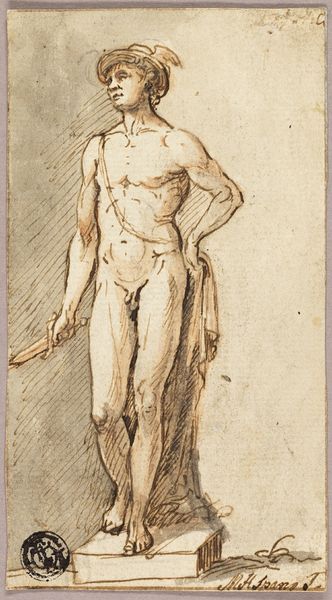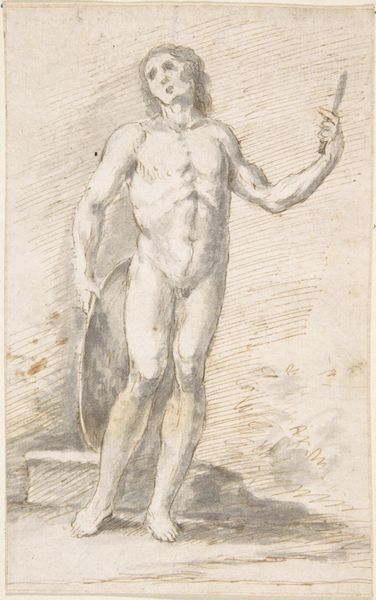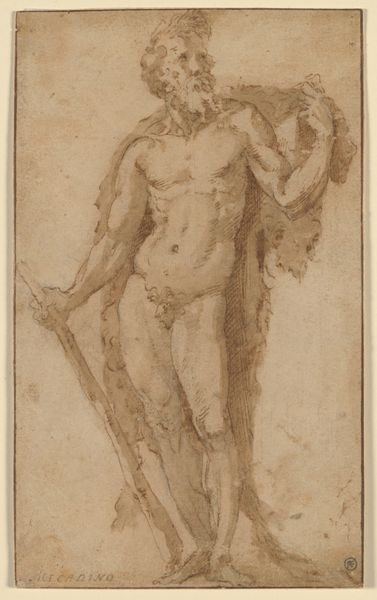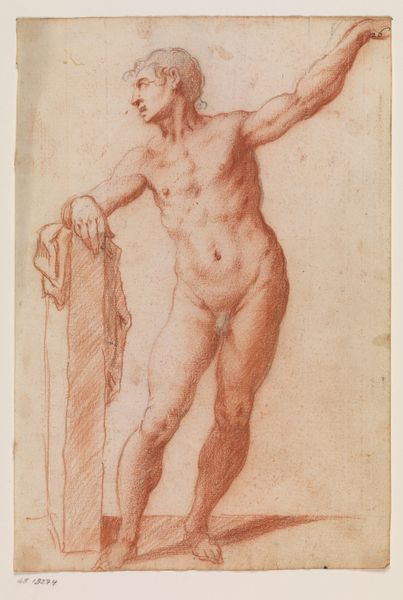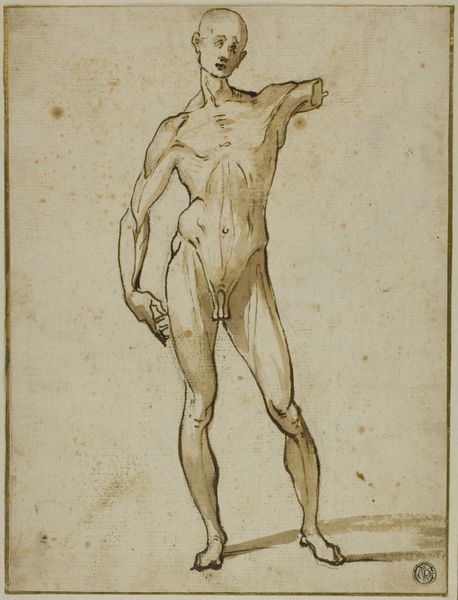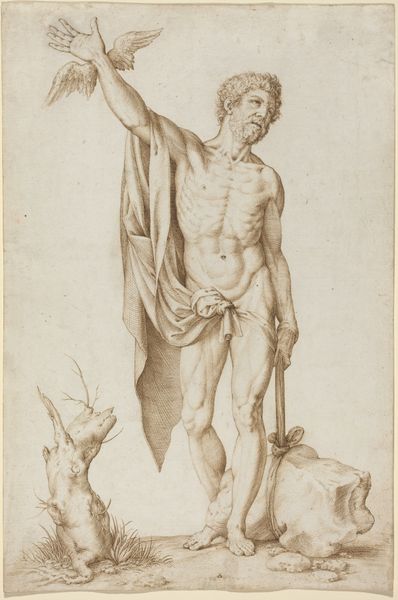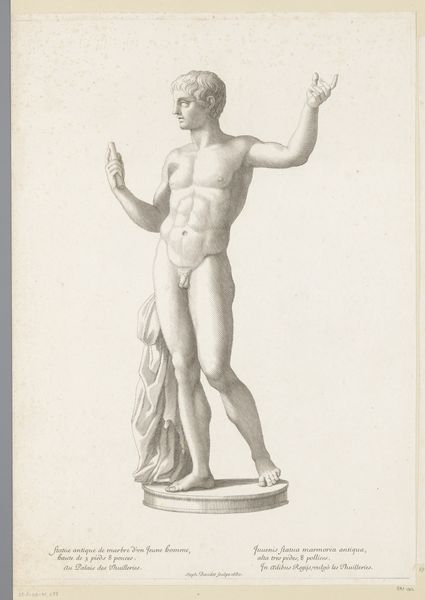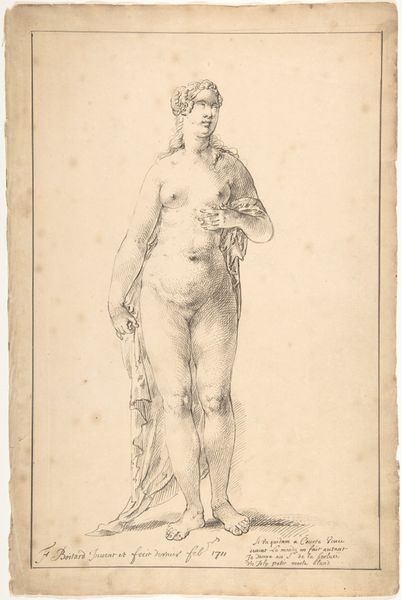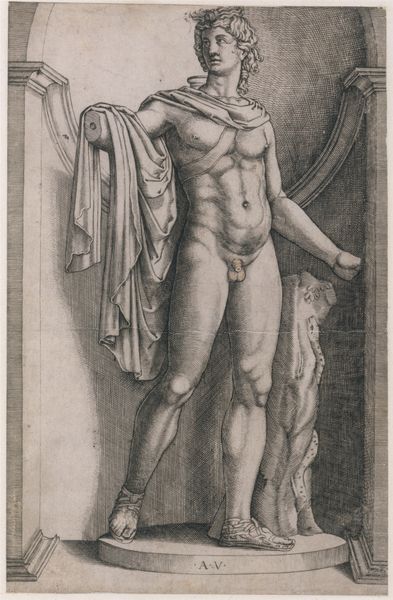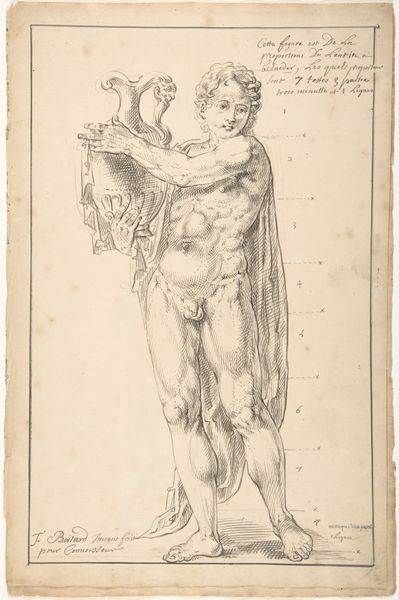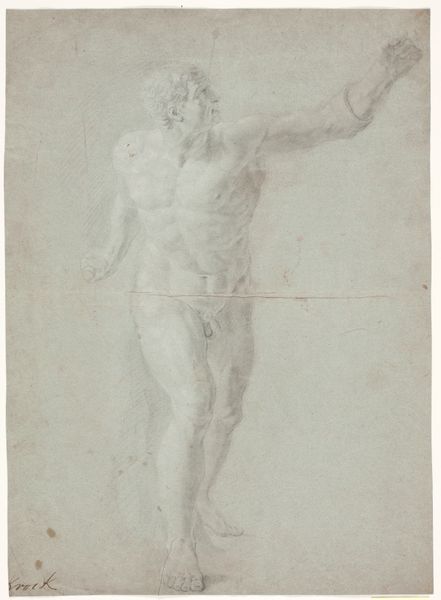
The Goddess Diana as a Personification of the Moon (Luna) 1563 - 1585
0:00
0:00
drawing, print, pencil
#
portrait
#
drawing
#
allegory
# print
#
mannerism
#
11_renaissance
#
pencil drawing
#
pencil
#
nude
Dimensions: Sheet: 13 9/16 × 8 3/8 in. (34.5 × 21.2 cm)
Copyright: Public Domain
Editor: We’re looking at "The Goddess Diana as a Personification of the Moon (Luna)," a pencil drawing by Jacques Jonghelinck from the late 16th century. I'm struck by how the artist renders the figure's anatomy and musculature with such precision, especially given it's just a drawing. What do you see as most compelling about the formal qualities of this work? Curator: The linearity is particularly compelling, isn’t it? Notice how Jonghelinck uses fine lines to define form and create subtle gradations in tone. This emphasizes the figure’s contours and creates a sense of volume. Note also the implied geometric structure, that underlying grid which guides the overall composition. Consider also the pose, with its weight shift and implied movement; the lines contribute to a dynamic tension. Do you see how that tension contributes to the overall effect? Editor: Yes, the contrapposto pose is beautifully rendered. And you are right about the grid! I hadn't consciously noticed it, but now it is visible, acting like an architectural structure for the form itself. It provides a unique sense of stability to the fluid pose. Are there other aspects of the line that standout? Curator: The varying weights of the lines create depth and shadow. Look closely at the torso versus the drapery. The heavier lines create darker shadows suggesting both the form and the fabric’s weight. What would you say the effect is, of this careful rendering? Editor: It creates a sense of grounded realism, despite the mythological subject matter. And it creates contrast with the surface drawing's more ephemeral or temporary nature. This exercise really sharpened my eye! Curator: Indeed, and recognizing this formal structure, of line and geometric form, encourages a richer engagement with Renaissance art's intellectual complexity and aesthetic accomplishments.
Comments
No comments
Be the first to comment and join the conversation on the ultimate creative platform.
